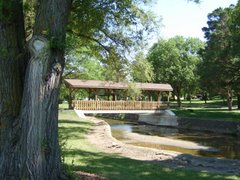--- toma19@charter.net wrote:
> The idea behind checks and balances is simple: No
> single branch, or in the case of the office of
> President, no single person, could endanger the
> republic by imposing their well-intentioned, but
> misguided will on the country. The other two
> branches would always have a 'check' on the third.
>
> The Executive and Legislative branches have a number
> of checks for each other provided in the
> Constitution. If Congress gets out of hand, and
> writes politically expediant, but otherwise 'bad
> laws', the President can veto those laws. Of
> course, if Congress REALLY wants a law passed, it
> can do so by overriding the presidential veto.
> Additionally, the varying terms of office in the
> Senate (six year terms, with 1/3 of the Senate
> replaced every two years) and House (every two
> years, the ENTIRE body is replaced) is a 'check'
> that provides both stability, but an opportunity to
> 'clean house' if necessary.
>
> Ironically, the 'checks' that apply to the Judicial
> branch are limited. There are several reasons for
> this that I won't get into hear, but one of those
> reasons is that our forefathers didn't quite know
> what to do with the judicial branch. In many
> respects, that branch could almost be characterized
> as an afterthought!
>
> Neither Congress nor the President can veto or
> override a Supreme Court decison. In fact, there
> are only two ways to 'check' a decision of the
> Supreme Court: 1) Modify the law to fit the terms
> of the decision, or 2) ammend the Constitution. For
> example, in the case of Texas v. Johnson, the Court
> ruled 5-4 that the government could pass no law
> prohibiting the burning of the U.S. flag if such
> action is part of free speech. For nearly 20 years
> since that decison was handed down, attempts at
> ammending the Constitution to allow for such laws
> have failed.
>
> (continued)
>






























No comments:
New comments are not allowed.